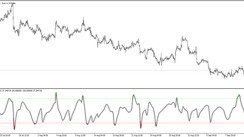Engaging in High-Risk Trading Tactics
Trading, while offering vast opportunities, is inherently a risky venture. Yet, some trading methods carry greater risk than others. Here's a glimpse into the world of the riskiest trading strategies:
- Leveraged Trading: This approach allows traders to manage larger positions with minimal capital, offering a double-edged sword of potentially high profits and equally staggering losses.
- Short Selling: A daring maneuver that involves selling an asset you don't possess, banking on its value to plummet. The catch? Should the price skyrocket, you stand to lose more than your original investment.
- Options Trading: This tactic provides the right — but not the commitment — to trade an asset at a preset price before a specified date. It's a game of chance where you can lose significantly if the asset's price swings unfavorably.
- Margin Trading: An offshoot of leveraged trading, this allows you to borrow from your broker to expand your position size. A caveat here is that an unfavorable market movement can compel you to liquidate your positions.
- Day Trading: A volatile strategy where assets are bought and sold within the same day, making traders highly susceptible to market turbulence throughout the trading period.
Classifying High-Risk Trading Strategies
The riskiest trading strategies typically fall under two broad categories:
- Speculative Strategies: Tailored to exploit brief price fluctuations, these strategies carry inherent risk, as an adverse market shift can result in substantial losses.
- High-leverage Strategies: These strategies use leverage to magnify profits. However, they simultaneously amplify potential losses.
Risk Mitigation in High-Risk Trading
There are a few measures you can adopt to limit the risks associated with these high-stakes trading strategies:
- Employ Stop Losses: These are automatic orders that sell your position when the price hits a particular threshold, capping your losses in case of an unfavorable market movement.
- Start Small: For beginners, starting with a modest account can be beneficial in limiting losses resulting from initial errors.
- Do Your Homework: Prior to trading any asset, it's vital to conduct thorough research to fully comprehend the risks involved.
- Risk Management Plan: Crafting a comprehensive plan that encapsulates your trading objectives and risk threshold can assist in making informed trading decisions.
What the Experts Say
The consensus among industry professionals is that such high-risk trading strategies can be perilous. They advise that only seasoned traders should dabble in these tactics, and even then, they should be executed with a high degree of caution.
Final Thoughts
While high-risk trading strategies can offer potentially lucrative returns, they are not without substantial risk. If you're contemplating engaging in such strategies, understanding the inherent risks and devising a sound risk management plan is absolutely crucial.





